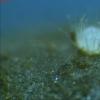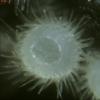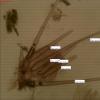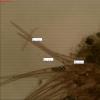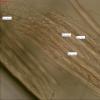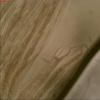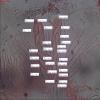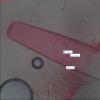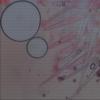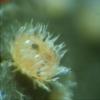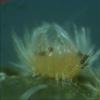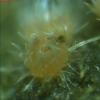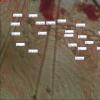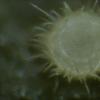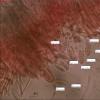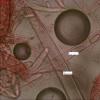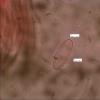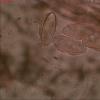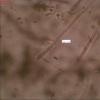
02-12-2025 18:59
This pair of ascos 2.5cm across were on recently b

02-12-2025 19:25
Buckwheat PeteHello, can anyone identify this hairy fungus growi

30-11-2025 12:53
 Edvin Johannesen
Edvin Johannesen
White short-stipitate apothecia found on thin twig

30-11-2025 10:47
 William Slosse
William Slosse
I recently found a collection of small Peziza sp.

27-11-2025 12:01
Thomas Læssøehttps://svampe.databasen.org/observations/10496727

27-11-2025 11:46
Thomas Læssøehttps://svampe.databasen.org/observations/10493918

17-09-2025 10:50
Heather MerryleesHi there!I am hoping for any advice on the identif

29-11-2025 08:40
 Andreas Millinger
Andreas Millinger
Hello,on a splintered part of a branch on the grou
Lasiobolus Macrotrichus
Joop van der Lee,
30-03-2013 19:28
 Besides the light orange species I also found these transparent ones on deer dung.
Besides the light orange species I also found these transparent ones on deer dung.Hairs do exceed a length of 600 um and they have pointed and rounded tops.
They also have broad "cells" which are not mentioned in the documentation.
The light orange species have hyaline spores with occasionally a "de Bary bubble" the transparent ones only have hyaline spores without the bubbles.
René Dougoud,
31-03-2013 09:28
Re : Still Lasiobolus Macrotrichus
Cher Collègue,
Je confirme la détermination, mais attention, vous déterminez cette espèce à partir d'exemplaires immatures ou pas assez mature. Il ne faut jamais mesurer des ascosproes dans les asques, vous ne pouvez savoir si leur taille est maximale. D'ailleurs les ascopores que vous avec mesurés sont dans la fourchette inférieure pour l'espèce, Voici celles que j'ai mesuré à partir de mes récoltes, 21,9-25,3 x 8,8-10,1 ?m ; X= 23,6 x 9,5 ?m ; Q= 2,5 (n 50 dans rouge congo SDS),?
Cette espèce ne se distingue pas par la longueur des poils, mais par la forme typique des ascospores, pour ce genre.
Cordialement
René
Je confirme la détermination, mais attention, vous déterminez cette espèce à partir d'exemplaires immatures ou pas assez mature. Il ne faut jamais mesurer des ascosproes dans les asques, vous ne pouvez savoir si leur taille est maximale. D'ailleurs les ascopores que vous avec mesurés sont dans la fourchette inférieure pour l'espèce, Voici celles que j'ai mesuré à partir de mes récoltes, 21,9-25,3 x 8,8-10,1 ?m ; X= 23,6 x 9,5 ?m ; Q= 2,5 (n 50 dans rouge congo SDS),?
Cette espèce ne se distingue pas par la longueur des poils, mais par la forme typique des ascospores, pour ce genre.
Cordialement
René
Joop van der Lee,
31-03-2013 10:37

Re : Still Lasiobolus Macrotrichus
Merci René pour votre explication.
I have found a more mature one with a view inside the cup where you can see the tops of the asci. All spores do probably have a "de Bary bubble" in the centre but that is hard to see in Congo Red. Spores do also have a thick wall and there is a substance that surrounds the spores. Paraphyses are septated and measure 1.95 um wide.
Joop
I have found a more mature one with a view inside the cup where you can see the tops of the asci. All spores do probably have a "de Bary bubble" in the centre but that is hard to see in Congo Red. Spores do also have a thick wall and there is a substance that surrounds the spores. Paraphyses are septated and measure 1.95 um wide.
Joop
